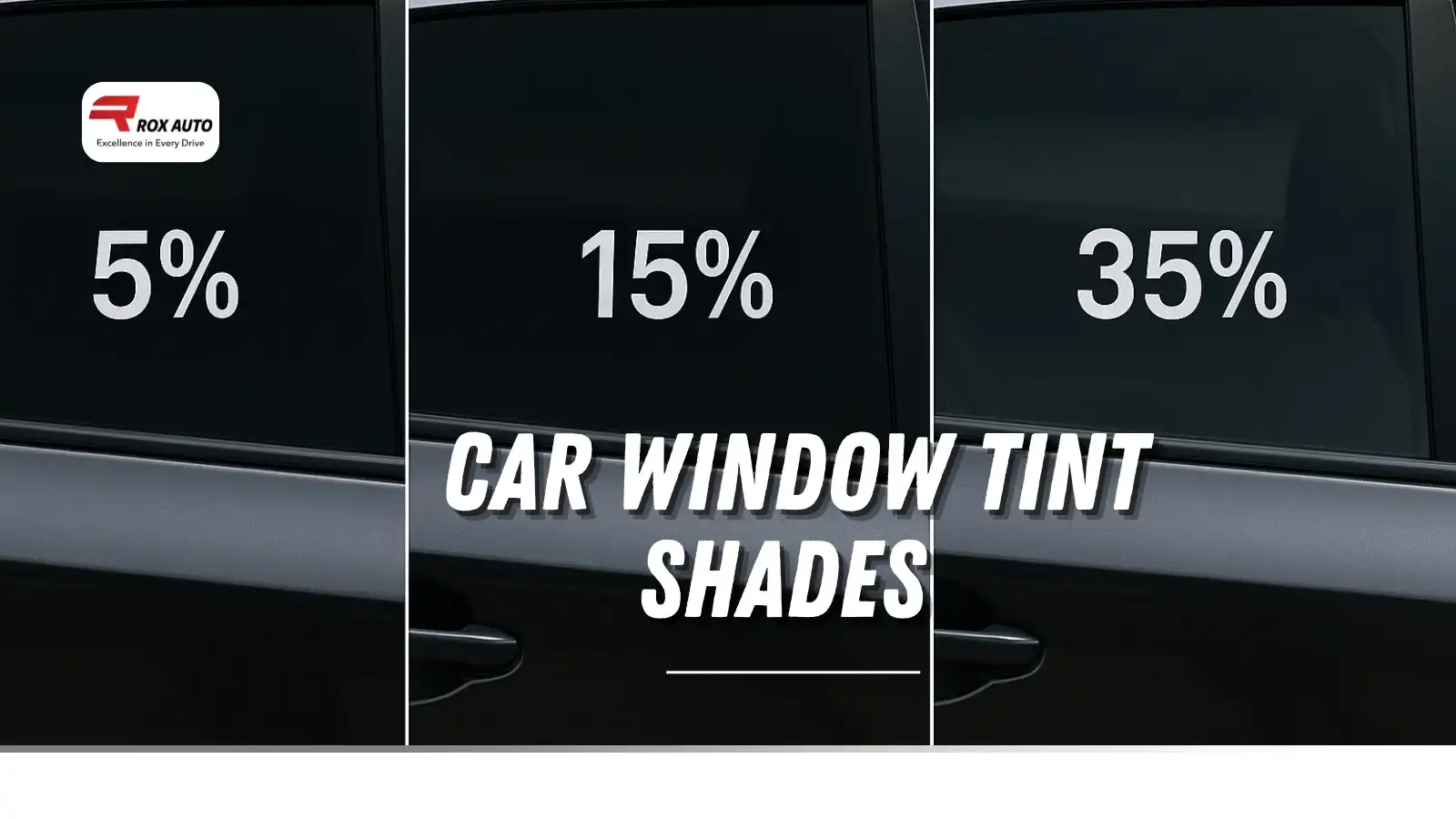Beyond giving your car a sleek and stylish look, tinted windows improve comfort, reduce glare, block harmful UV rays, and add an extra layer of privacy. But not all films are the same. The level of darkness is measured in shades, and each shade serves a different purpose. That’s why it’s important to know about window tint shades clearly before deciding which one works best for your needs.
Many car owners feel uncertain about which shade to choose. A lighter tint improves visibility but offers less privacy, while a darker tint enhances protection and style but may not be legal for all windows. By understanding the differences between window tint shades, you can make a choice that keeps your car compliant with local laws, saves money in the long run, and delivers the perfect balance of appearance, safety, and comfort.
What Are Window Tint Shades?
Window tint shades refer to how much visible light can pass through the tinted film applied to your car’s glass. It is measured as Visible Light Transmission (VLT%). For example, a tint with 35% VLT allows 35% of sunlight to pass through, while blocking the rest. The lower the percentage, the darker the shade looks.
VLT% is the most important metric when discussing tint. A high VLT, like 70% will look almost clear but still block harmful UV rays. A low VLT, like 5% often called limo tint. It creates a dark, blacked-out effect that makes it nearly impossible to see inside. Knowing how this measurement works is the first step in understanding window tint shades.
Common Window Tint Shades
Here are the common shades to tint your vehicle;
70% Tint: Almost Clear, Minimal Shading
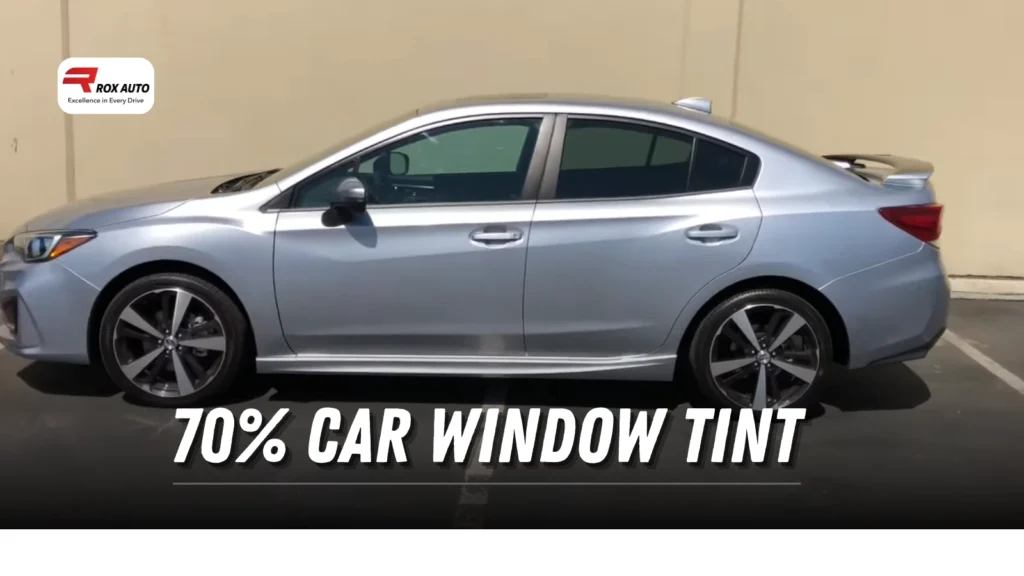
A 70% tint is often used when you want protection without dramatically changing the look of your car. It provides strong UV blocking and reduces glare, but to the eye, it looks almost transparent. It makes it popular for windshields in places where a clear view is legally required.
While not the most stylish option, a 70% tint serves a practical purpose. It’s perfect for drivers who want to maintain maximum visibility at night. While still gaining the benefits of heat reduction and interior protection.
50% Tint: Light Tint, Glare Reduction
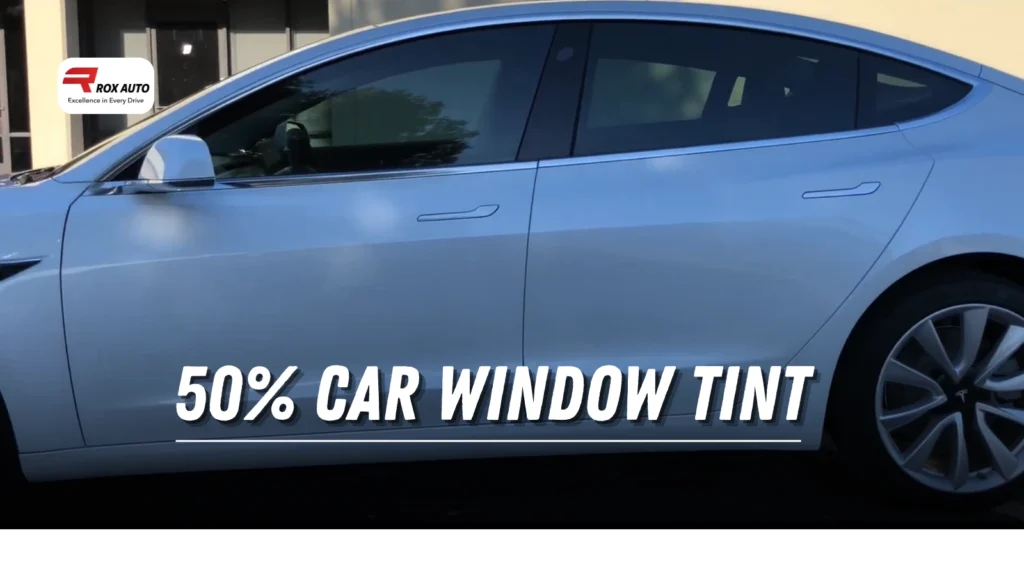
With a 50% tint, the glass begins to look darker, but not excessively so. This shade provides solid glare reduction during daytime driving and is a comfortable choice for front windows where visibility is still a priority.
If you want a balance between function and aesthetics. Then 50% tint is a safe option. It adds subtle style, improves comfort in sunny conditions, and helps reduce eye strain without making the car look overly shadowed.
35% Tint: Medium Tint, Balanced Style and Visibility
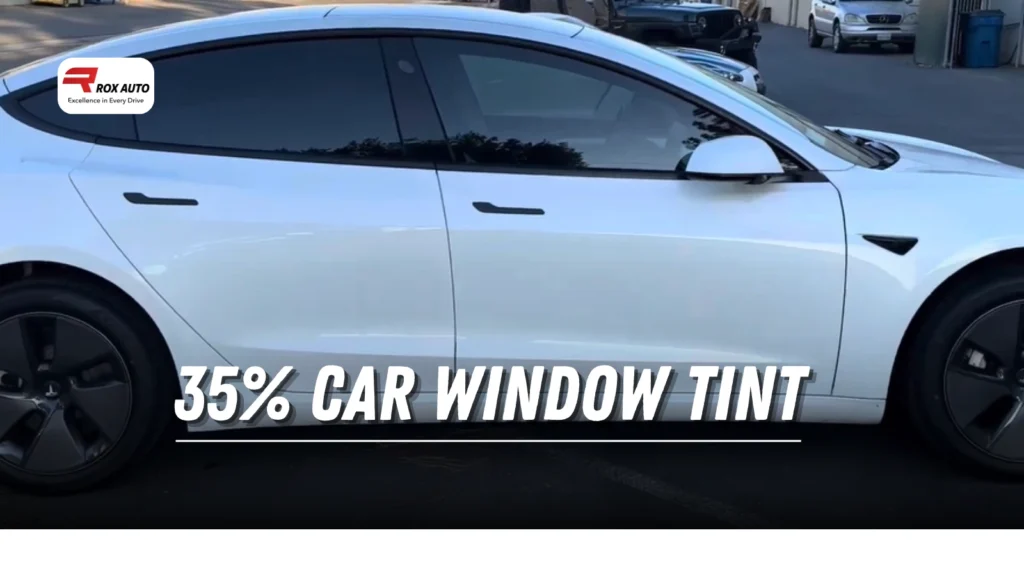
The 35% shade is one of the most popular choices among car owners. It’s dark enough to enhance privacy and give a sleek appearance, but still light enough to maintain clear visibility on the road. Many regions consider 35% to be the darkest legal shade for front windows, making it a practical pick.
Drivers like 35% tint because it delivers a premium look while staying compliant. It maintains the right balance between style and legal requirements.
20% Tint: Dark Tint, Privacy Focused
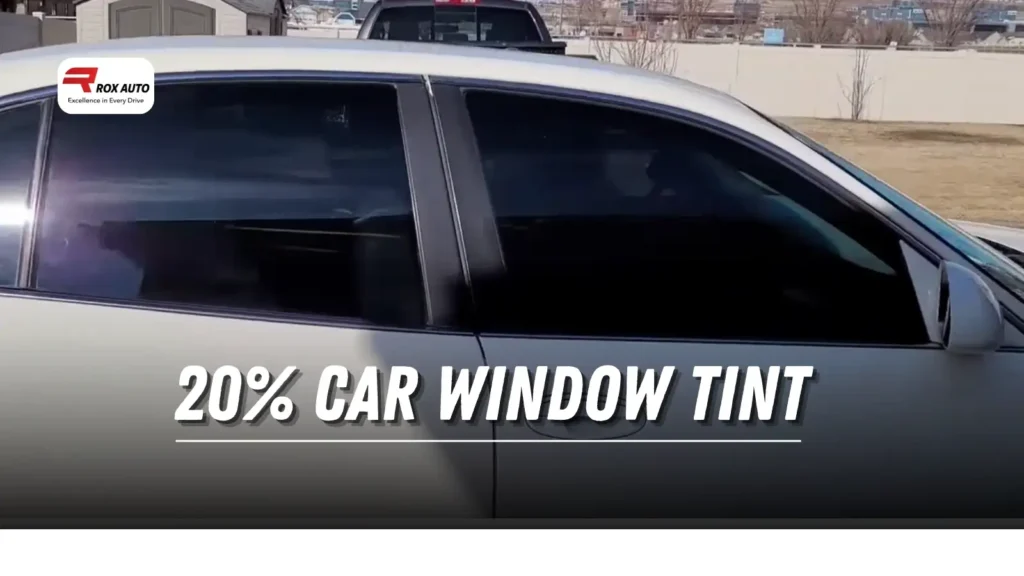
At 20%, tint film begins to look much darker. Outsiders can see only vague shapes inside the vehicle, which gives passengers and belongings greater privacy. This shade is often applied to rear windows, where darker films are usually permitted by law.
A 20% tint also improves heat rejection, making it ideal for hot climates. If your goal is comfort, style, and security combined. Then this shade delivers excellent results without going to extremes.
5% Tint (Limo Tint): Ultra Dark, Maximum Privacy
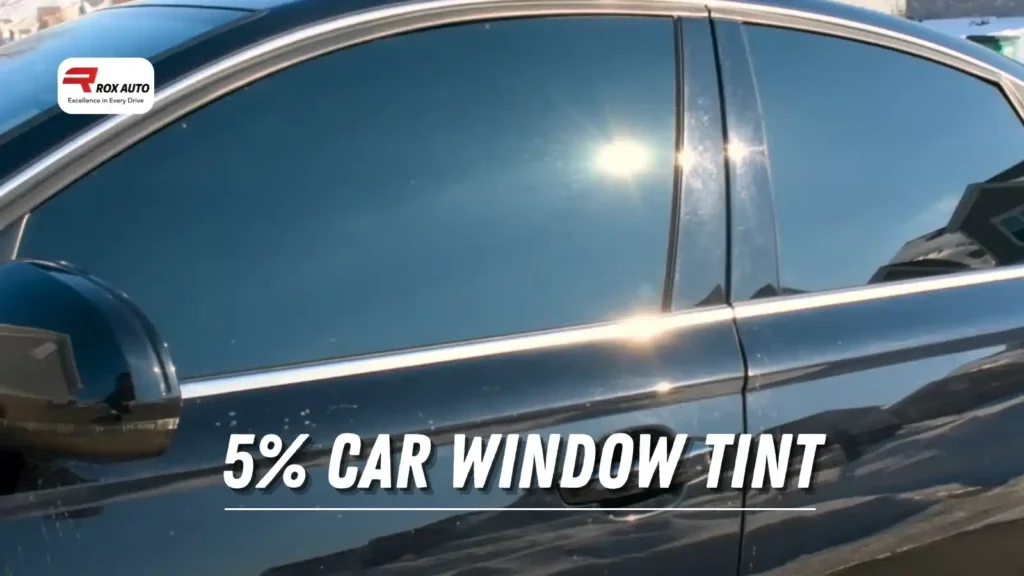
The darkest option, 5% tint or limo tint, lets in only a sliver of light. From the outside, it appears almost completely blacked out. This shade is often used on luxury vehicles. Also used by someone who wants absolute privacy.
While the limo tint looks impressive, it has limitations. It’s not legal for front windows in most regions, and it can reduce visibility during nighttime driving. Still, when applied to rear windows, it offers unmatched privacy and a bold aesthetic statement.
Benefits of Different Tint Shades
Car window tint gives you many benefits. Here are a few key ones;
Heat and UV Protection
Regardless of whether you choose 70% or 5%, modern tint films block up to 99% of UV rays. This protection prevents skin damage, stops fading of upholstery, and reduces dashboard cracking. Darker shades also improve solar heat rejection, which can significantly cool your vehicle’s interior on hot days.
By cutting down on heat, window tint reduces your need for air conditioning. That translates to better fuel efficiency and a more comfortable driving experience.
Privacy and Security
One of the most appealing aspects of tinting is privacy. With darker shades like 20% or 5%, outsiders cannot easily see into the car. It not only protects your privacy but also helps deter theft by keeping valuables out of sight.
Privacy tinting also adds an extra layer of comfort when driving through busy areas. You can enjoy peace of mind knowing that your passengers and belongings are shielded from curious eyes.
Style and Aesthetics
Tinting is more than functional; it’s a style upgrade. Even lighter shades like 35% give your car a modern, premium look. Darker tints add a bold, high-end finish that sets your vehicle apart.
Whether you’re aiming for a subtle improvement or a dramatic blacked-out appearance, window tint shades allow you to tailor your vehicle’s look to your personal taste.
Glare Reduction for Driving Comfort
Few things are more distracting than sunlight glaring directly into your eyes while driving. Tint film, especially in the 35% to 50% range, helps reduce glare significantly. It makes driving safer and more comfortable in bright conditions.
Glare reduction also improves visibility when facing headlights at night. In this way, you can enjoy comfortable and less stressful drives day and night.
Legal Considerations for Tint Shades
Tint laws are not the same everywhere, and that’s why having window tint shades explained in a legal context is important. Most regions set strict limits on how dark you can go for front side windows and windshields. Violating these laws can result in fines, failed inspections, and even being forced to remove the film.
For example, many places allow a maximum of 35% tint on front windows, while rear windows may legally go darker. Always check your state or country’s vehicle tint regulations before making a choice. It’s better to stay compliant than risk penalties later.
Choosing the Right Tint Shade
Below is help for you to choose the right tint shade for your car.
Matching Tint to Personal Preferences and Lifestyle
The “right” tint shade depends on your goals as a driver. If you prioritize safety and night visibility, a lighter tint like 50% may be best. If privacy and a bold look are your goals, then 20% or even 5% for the rear windows could be more suitable.
Your driving conditions also matter. In sunny climates, darker shades can reduce interior heat dramatically. In cooler or overcast regions, a lighter shade may provide enough comfort while maintaining maximum clarity.
How to Balancing Looks, Comfort, and Compliance for Car Window Tint
Start with your local legal limits. From there, narrow down options based on your personal preferences. A 35% tint is often considered the “sweet spot” because it’s stylish, practical, and legal in many areas.
If you’re unsure, consult a professional installer. A professional will demonstrate how each shade looks in real conditions and guide you toward the best choice for your lifestyle. By balancing law, comfort, and appearance, you’ll end up with a tint shade that checks all the boxes.
Professional Car Window Tinting Services
If you’re ready to upgrade your vehicle with the right shade, our professional window tinting services in Adelaide are here to help. At ROX Auto, we use premium ceramic and nano-ceramic films. They block up to 99% of UV rays while delivering a clean, long-lasting finish. Whether you want a subtle 35% shade for everyday driving or a bold limo tint for maximum privacy, our mobile and in-workshop tinting options give you flexibility and convenience. With expert installation, full compliance with Australian standards, and a lifetime guarantee, we make sure your car gets the perfect look and protection.
Conclusion
Window tinting is one of the best upgrades you can make for your car. However, not all shades are the same. From nearly clear 70% films to dramatic 5% limo tint, each option delivers a different balance of privacy, heat rejection, and style. Having the right knowledge of window tint shades helps car owners choose wisely and avoid mistakes. Before finalizing your tint, remember to check the legal limits in your area. A shade that looks perfect may not be permitted on certain windows.
Frequently Asked Questions
1. What is the difference between a 20% and a 35% window tint shade?
The main difference is visibility. A 20% tint is much darker, allowing only one-fifth of light to pass through, which provides more privacy and better heat rejection. On the other hand, a 35% tint strikes a balance between style and visibility. It still looks sleek but allows more light in, which helps with nighttime driving and is often within legal limits for front windows.
2. Does a darker window tint shade always mean better heat protection?
Not necessarily. While darker tints like 5% or 20% do block more visible light, modern ceramic and nano-ceramic films can provide excellent heat rejection even at lighter shades. For example, a 35% ceramic tint might reject more infrared heat than a standard 20% dyed film. The type of film is just as important as the shade when it comes to cooling performance.
3. Which window tint shade is legal for front car windows?
Laws vary by state and country, but in many regions, the darkest legal shade for front windows is around 30–35% VLT. Rear windows usually allow darker shades, including 20% or 5%. Always check your local vehicle regulations before choosing a shade, because what’s legal in one area may result in fines or inspection issues in another.


